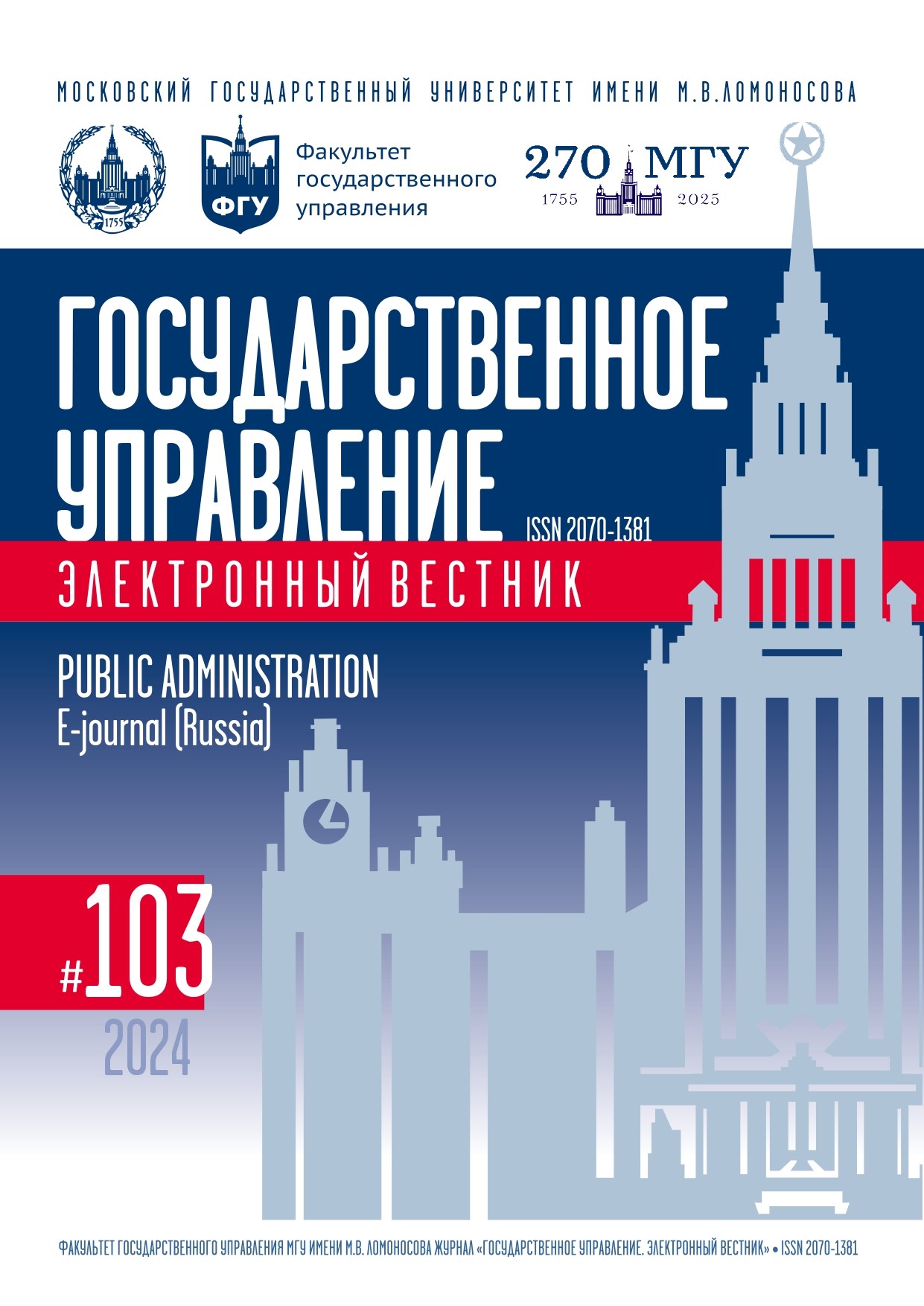Management of Corporate Distressed Debt: From Terminology to Statistics
Keywords:
Distressed (problem) debt, defaulted exposures bank loan (debt), overdue debt, non-performing loan (NPL), distressed asset, stressful (toxic) assets, non-performing assets (NPA), non-performing exposures (NPE), doubtful debt, bad debts, sectoral structure of (overdue) debt, distressed (troubled) companiesAbstract
The aim of the paper is to systematize definitive approaches of “problem (distressed) debt” and related terms in order to create a conceptual apparatus useful from the point of view of management entities, as well as to statistically study the dynamics and sectoral structure of problem debt based on the banking sector performance indicators in Russia and other countries in 2009–2023. As a result of the analysis of international and Russian documents in the field of banking regulation, two types of problem debt typologies have been identified: classifications of credit risk of the supervisory authority and recommendations of internal credit risk. Two approaches to the definition of “problem (distressed) debt” have been identified: a regulatory (accounting) approach based on the requirements of regulatory authorities and reporting standards; an identification approach that includes a list of various signs of problems. As a result of the synthesis of approaches, the article proposes the author’s understanding of the terms “overdue debt (credit)”, “problem (distressed) debt” and “problem asset”, taking into account the subject composition of debt managers, represented not only by banks, but also by trade creditors. As part of the preparation of the statistical review for 15 years, a constant excess of the share of “bad” loans (with no probability of repayment and complete depreciation of debt) over “problematic” ones was revealed, which confirms the low effectiveness of the banks’ preventive work to prevent borrowers from becoming problematic (troubled). The authors analyzed the dynamics of the ratio of non-performing loans (NPL) to the total volume of loans issued in 28 countries of the world, revealed a relatively high proportion of the indicator in Russia in recent years. An assessment of the sectoral debt structure of Russian companies showed the dominant position of the manufacturing industry, whereas in the structure of overdue debts, the main companies are from the real estate, wholesale and retail trade sectors. The work of credit institutions to manage problem debts is an important issue of ensuring the economic security of the state and should include monitoring the condition of borrowers based on a strategic map and a comprehensive analysis model, using the methodology of managing transformational projects for the financial recovery of troubled companies.
References
Андрюшин С.А., Кузнецова В.В. Особенности кредитной активности банковского сектора России в период роста плохих долгов // Имущественные отношения в Российской Федерации. 2012. № 1. С. 6–23.
Барахоева М.С. Вопросы управления проблемной и просроченной ссудной задолженностью коммерческих банков // Управленческий учет. 2022. № 6-2. С. 330–335.
Белоусов А.Л. Правовые аспекты передачи банками просроченной задолженности коллекторским организациям // Финансы и кредит. 2012. № 35. С. 42–48.
Бобылева А.З., Львова О.А. Предупреждение банкротства: институциональная поддержка слияний и присоединений проблемных компаний // Проблемы теории и практики управления. 2019. № 7. С. 87–99.
Бобылева А.З., Попов Н.Е. Управление проектами финансового оздоровления компаний // Российский журнал управления проектами. 2023. Т. 43, № 2. С. 20–27.
Бондарь А.П., Блажевич О.Г., Сугоняко И.В. Деятельность кредитных организаций по минимизации проблемных активов // Бюллетень науки и практики. 2016. № 4 (5). С. 403–408.
Варламова Е.А. Производственный комплекс: из инвестиционного проекта в проблемный актив // Имущественные отношения в Российской Федерации. 2022. № 8 (251). С. 19–24.
Голубева А.В., Бондарь А.П., Федоров И.А. К вопросу о сущности проблемных кредитов // Ученые записки Крымского инженерно-педагогического университета. 2016. № 2. С. 48–52.
Заернюк В.М., Анашкина Е.Н. Пути решения проблемы просроченной задолженности банков по розничным кредитам // Финансовая аналитика: проблемы и решения. 2014. № 43. С. 17–26.
Космачева Н.М., Стецюнич Ю.Н. Оценка качества управления кредитными рисками в банках по критерию просроченной задолженности // Экономика нового мира. 2018. № 4 (12). С. 47–58.
Лыкова Н.М. Развитие методов управления проблемными кредитами в коммерческом банке: дисс. канд. экон. наук: 08.00.10 / Фин. ун-т при Правительстве РФ, 2013.
Львова О.А. Оценка состояния бизнеса в рамках антикризисного управления: подходы для собственника, кредитора, арбитражного управляющего и инвестора // Вестник Института экономики Российской академии наук. 2023b. № 44. С. 89–111. DOI: 0.52180/2073-6487/_2023/_4/_89/_111
Львова О.А. Индикаторы оценки результативности системы управления банкротством в России по данным статистических источников // Государственное управление. Электронный вестник. 2021. № 89. С. 32–51. DOI: 10.24412/2070-1381-2021-89-32-51
Львова О.А. Инструментарий превентивной реструктуризации для предупреждения банкротства компаний // Государственное управление. Электронный вестник. 2023a. № 98. С. 31–47. DOI: 10.24412/2070-1381-2023-98-31-47
Никифорова В.Д., Коваленко А.В., Никифоров А.А. Теоретические и практические аспекты работы коммерческих банков с проблемными кредитами // Научный журнал НИУ ИТМО. Серия «Экономика и экологический менеджмент». 2019. № 3. С. 93–100.
Платонова Ю.Ю., Зайченко С.Е. Инструменты управления портфелем проблемных кредитов в современных условиях // Финансы и кредит. 2011. № 4 (436). С. 28–36.
Попов Н.Е. Роль государства в работе с проблемными долгами в кризисные периоды: российский и международный опыт // Инновации и инвестиции. 2021. № 11. С. 73-82.
Смулов А.М., Нурзат О.А. Проблемная задолженность: понятие, основные признаки и меры повышения эффективности возврата проблемных кредитов // Финансы и кредит. 2009. № 35 (371). С. 2–12.
Хандриков А.А. Международный опыт управления проблемными активами // Финансы и кредит. 2003. №. 15 (129). С. 61–66.
Anson M.J.P. A primer on distressed debt investing // The Journal of Private Equity. 2002. P. 6–17.
Bianchi M.T., Cosentino A. The Impact of Digitalization on the Company Value: A Nonperforming Loan Management Business Application // Intellectual Capital, Smart Technologies and Digitalization: Emerging Issues and Opportunities. 2021. P. 251–259.
Guo X., Jarrow R.A., Lin H. Distressed debt prices and recovery rate estimation //Review of Derivatives Research. 2008. Т. 11. P. 171–204.
Harner M.M. Trends in Distressed Debt Investing: An Empirical Study of Investors' Objectives //American Bankruptcy Institute Law Review. 2008. Т. 16. P. 69–119.
Nikolopoulos K.I., Tsalas A.I. Non-performing loans: A review of the literature and the international experience // Non-performing loans and resolving private sector insolvency: Experiences from the EU periphery and the case of Greece. 2017. P. 47–68.

